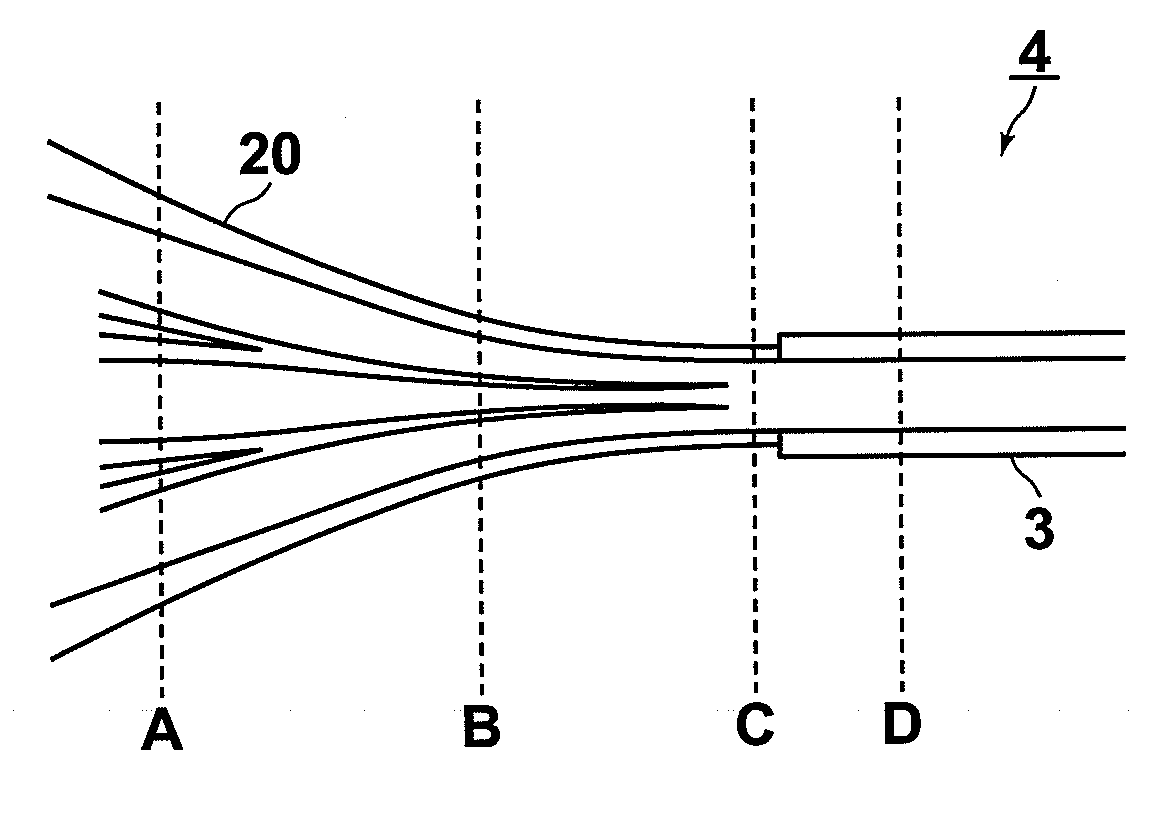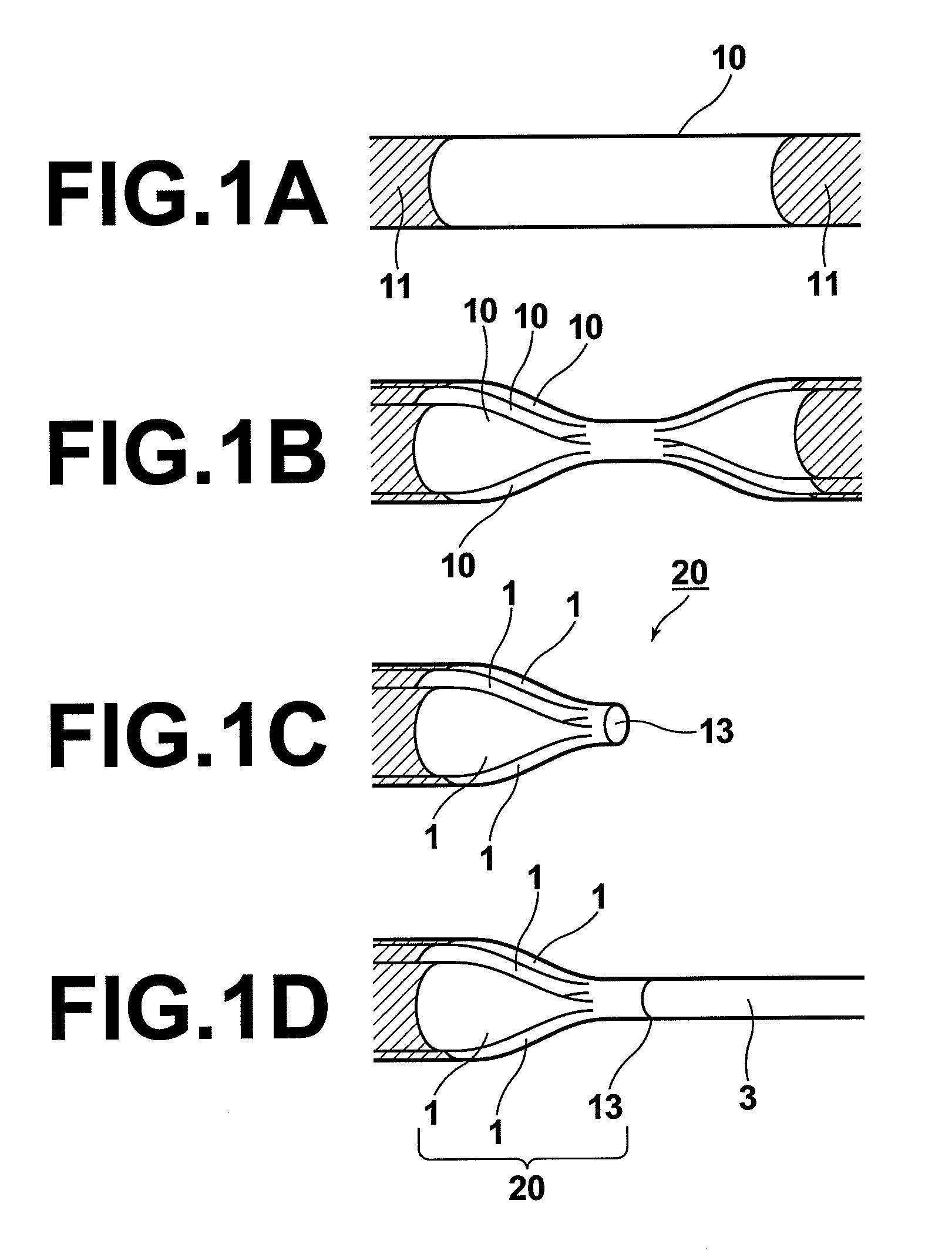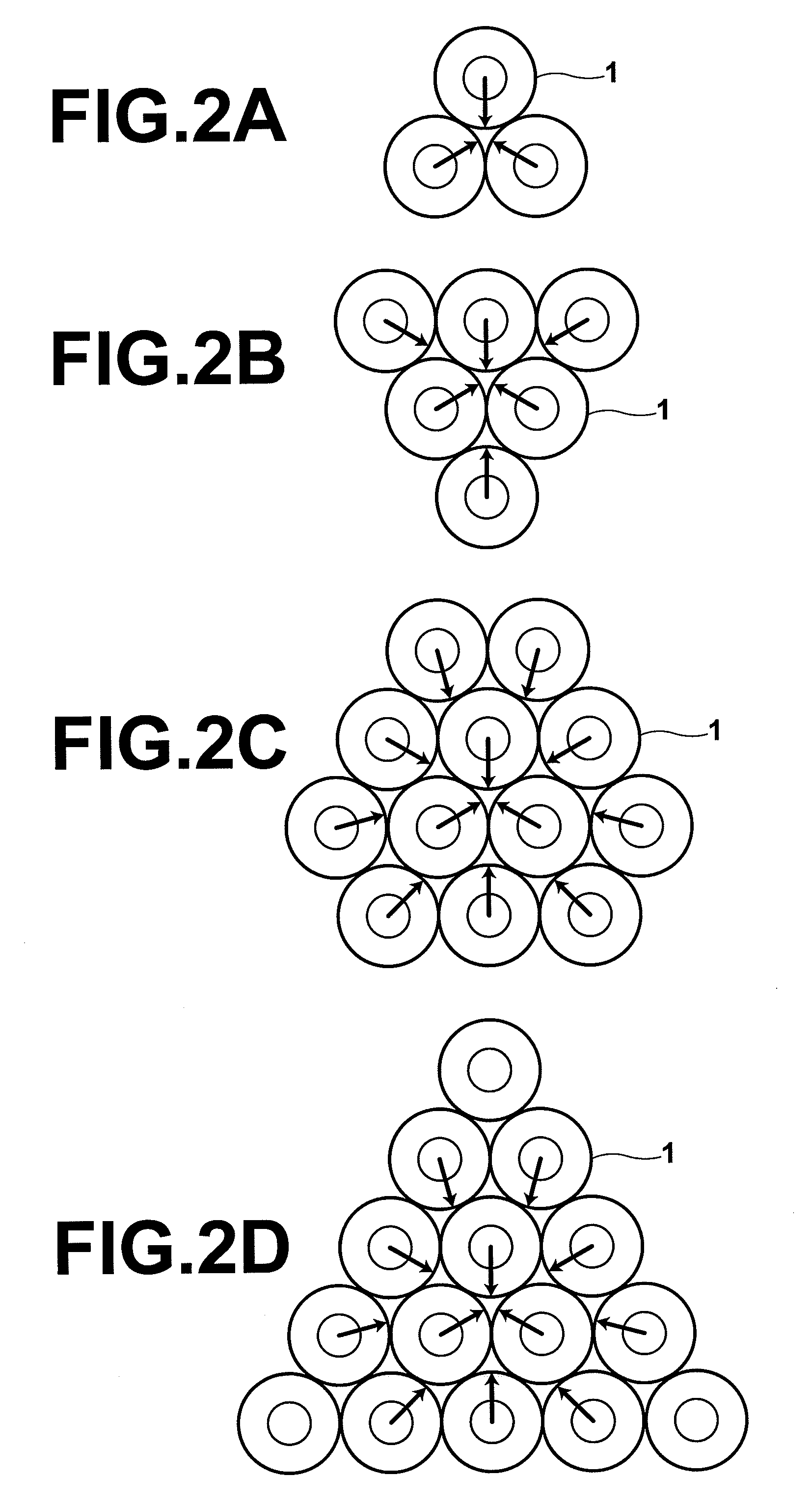Multimode optical combiner and process for producing the same
- Summary
- Abstract
- Description
- Claims
- Application Information
AI Technical Summary
Benefits of technology
Problems solved by technology
Method used
Image
Examples
first embodiment
[0030]Hereinbelow, a process for producing the multimode optical combiner according to the first embodiment of the present invention is explained with reference to FIGS. 1A through 5C.
[0031]FIGS. 1A to 1D are perspective views schematically illustrating representative stages in the process for producing the input-side optical fiber according to the first embodiment.
[0032]First, the coating 11 in a predetermined portion of each of a plurality of multimode optical fibers 10 is removed as illustrated in FIG. 1A. Then, the plurality of multimode optical fibers 10 are bundled in a closest arrangement so that none of the multimode optical fibers 10 is located in the center of the bundle. The number of the multimode optical fibers 10 and the manners of the closest arrangement are explained later. Subsequently, the predetermined portions of the multimode optical fibers 10 in which the coating 11 is removed are softened by heating so that the cores of the multimode optical fibers 10 in the h...
second embodiment
[0046]The multimode optical combiners according to the present invention can be produced by other processes. Hereinbelow, a process for producing a multimode optical combiner according to the second embodiment of the present invention is explained with reference to FIG. 6.
[0047]First, a plurality of multimode optical fibers are bundled, and the multimode optical fibers in a partial length of the bundle are joined into a single core, in a similar manner to the first embodiment. Then, an input-side optical fiber is produced by cutting the joined portion of the bundle of the multimode optical fibers at a position at which the core diameter is greater than the core diameter at the input end of the output-side optical fiber. The cut surface of the input-side optical fiber becomes the output end. Next, the output end of the input-side optical fiber is joined to the input end of the output-side optical fiber by fusion or the like. Then, in order to suppress the loss in the combined light, ...
third embodiment
[0049]Next, a process for producing a multimode optical combiner according to the third embodiment of the present invention is explained with reference to FIG. 7.
[0050]First, a plurality of multimode optical fibers are bundled, and the multimode optical fibers in a partial length of the bundle are joined into a single core, in a similar manner to the first embodiment. Then, an input-side optical fiber is produced by cutting the joined portion of the bundle of the multimode optical fibers at a position at which the core diameter is greater than the core diameter at the input end of the output-side optical fiber. The cut surface of the input-side optical fiber becomes the output end. Next, the core diameter of the input end of the output-side optical fiber is increased by a process of heat diffusion or the like so that the output end of the input-side optical fiber and the input end of the output-side optical fiber satisfy the aforementioned relationship (2). Thereafter, the output en...
PUM
| Property | Measurement | Unit |
|---|---|---|
| Diameter | aaaaa | aaaaa |
| Length | aaaaa | aaaaa |
Abstract
Description
Claims
Application Information
 Login to View More
Login to View More - R&D
- Intellectual Property
- Life Sciences
- Materials
- Tech Scout
- Unparalleled Data Quality
- Higher Quality Content
- 60% Fewer Hallucinations
Browse by: Latest US Patents, China's latest patents, Technical Efficacy Thesaurus, Application Domain, Technology Topic, Popular Technical Reports.
© 2025 PatSnap. All rights reserved.Legal|Privacy policy|Modern Slavery Act Transparency Statement|Sitemap|About US| Contact US: help@patsnap.com



